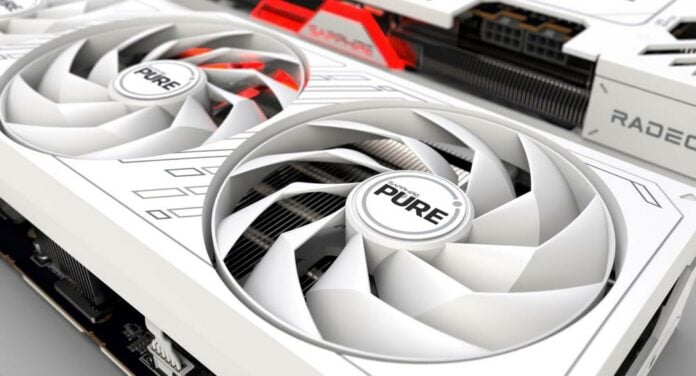Sapphire has announced Nitro+, Pulse, and Pure Radeon RX 7800 XT and RX 7700 XT graphics cards and offer different cooling and size configurations to suit all needs.
In total six models will be available, triple-fan, triple-slot Nitro+ RX 7800 XT and RX 7700 XT, triple-fan, 2.5-slot Pure RX 7800 XT and RX 7700 XT, and dual-fan, 2.5-slot Pulse RX 7800 XT and RX 7700 XT. Since Nitro+ and Pulse models are well known by now, we’ll focus on the new Pure series which arrives looking sharp in full white with some grey accents and a red LED on the side.
From their looks, these resemble Pulse models painted in white instead of black and red. They both feature angular velocity fan blades offering up to 44 per cent more downward air pressure and 19 per cent higher airflow compared to the previous generations, says Sapphire, while being 10 per cent quieter thanks to their dual-ball-bearing design which also improves lifespan by approximately 85 per cent.
Due to 320mm (L) x 128.75mm (W) x 52.57mm (H) dimensions, Sapphire has also bundled a GPU support bracket to secure the graphics card in place and eliminate unwanted sag. Both operate on PCIe 4.0 x16 slot, taking power from two 8-pin power cables.
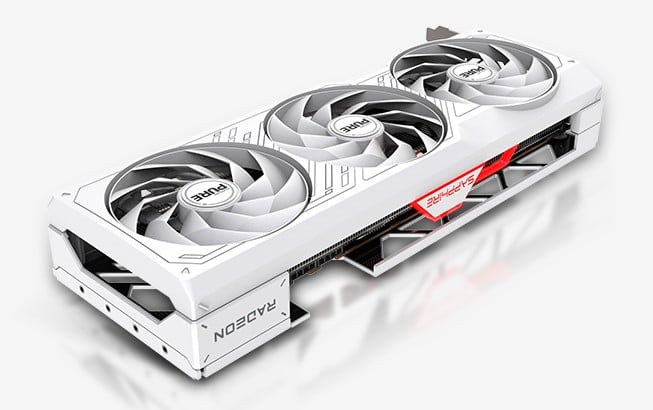
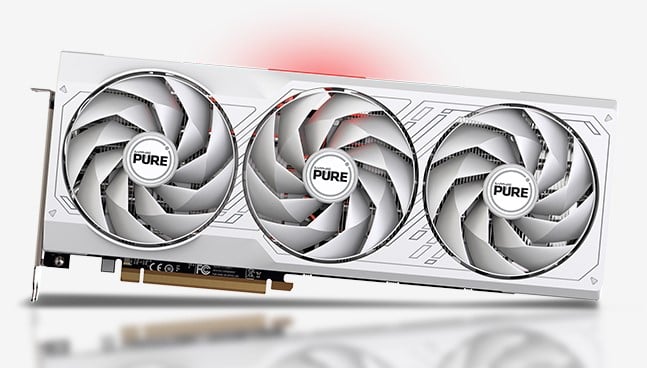
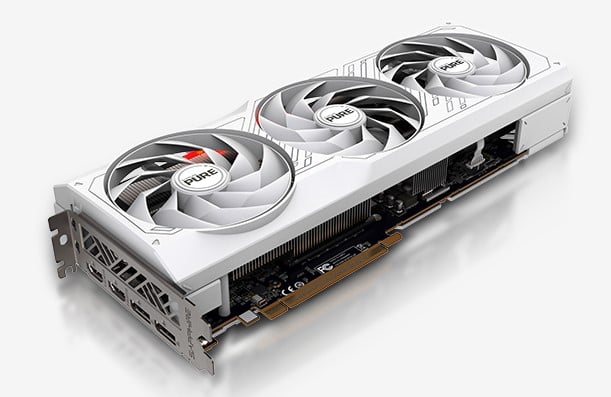
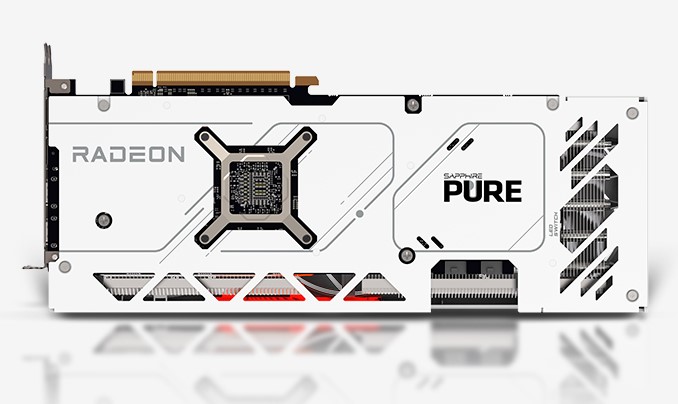
Pure Radeon RX 7800 XT boasts 60 RDNA 3 CUs packing 64MB of Infinity Cache clocked at 2,169MHz game and 2,475MHz boost, coupled with 16GB of 19.5Gbps GDDR6 memory running on a 256-bit bus. Video outputs comprise two HDMI plus two DisplayPort 2.1 supporting up to 7680×4320 resolution. To deliver the card’s 270W total board power where it’s needed, the PCB is made of high-density 14-layer 2oz copper for increased current capacity and stability.
Pure Radeon RX 7700 XT, on the other hand, lowers the CU count to 54 and packs 48MB of Infinity Cache – not that different, all things considered, but this time clocked at 2,226MHz game and 2,584MHz boost, alongside 12GB of 18Gbps GDDR6 memory on a 192-bit bus. Once more, we have two HDMI plus two DisplayPort 2.1 connections sitting on a 14-layer copper PCB, but with a TBP of 240W.
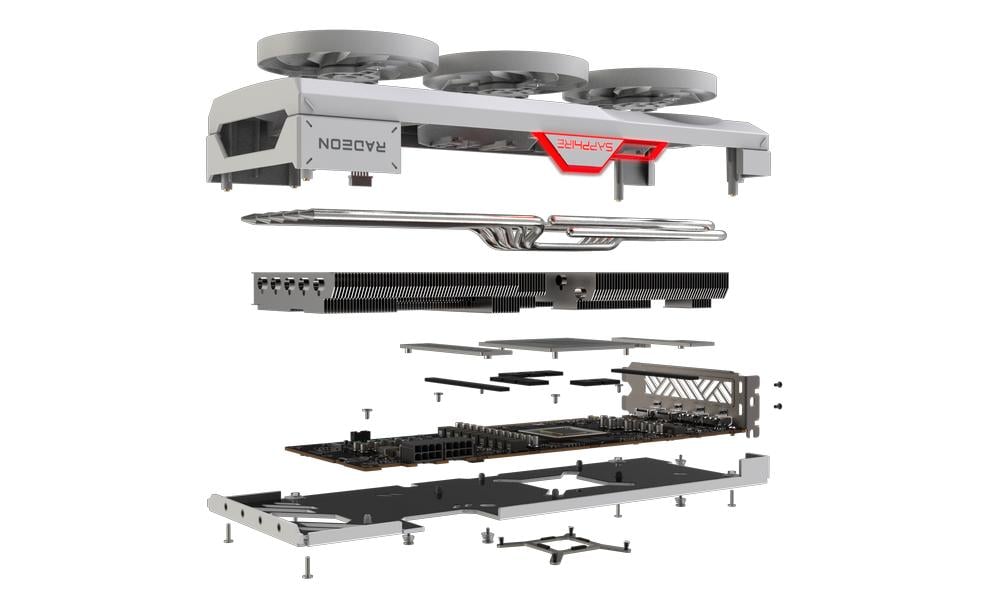
For those preferring the brand’s original cooler designs, Sapphire will also release triple-fan Nitro+ and dual-fan Pulse models of the RX 7800 XT and RX 7700XT GPUs. These are clocked a bit differently to fit their price tier and cooling capacity, with the Nitro+ RX 7800 XT / RX 7700 XT filling three slots and consuming 288W and 252W, respectively, and Pulse RX 7800 XT / RX 7700 XT taking 2.5-slots, like the Pure, but carrying only two fans, thus limiting the TBP to 266W and 230W, respectively. Plenty of choice.
| Card | Price USD | Price UK GBP |
|---|---|---|
| RX 7800 XT Nitro+ | $549 | £519.99 |
| RX 7800 XT Pure | $529 | £499.99 |
| RX 7800 XT Pulse | $509 | £479.99 |
| RX 7700 XT Nitro+ | $509 | £469.99 |
| RX 7700 XT Pure | $469 | £439.99 |
| RX 7700 XT Pulse | $449 | £419.99 |
As for pricing, the hierarchy is clear and obvious. Depending on whether you prioritise framerate or features, an RX 7800 XT Pulse costs £479.99 while the feature-laden RX 7700 XT Nitro+ is only bit cheaper at £469.99.
Head honcho Sapphire Radeon RX 7800 XT Nitro+ Gaming OC is a rather splendid affair, so be sure to read our in-depth review right over here.

